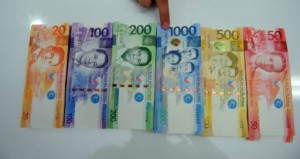Growth in money supply slowed in September
Money supply growth continued to slow down in September and approached the “normal” range of 12 to 15 percent, according to data released Friday.
After monetary officials initiated measures to mop up excess cash circulating in the economy, domestic liquidity or M3 growth decelerated to less than half its peak earlier in the year.
Some of the measures the central bank undertook were the adjustments in interest rate, special deposit account (SDA) yields, and bank reserve requirements.
However, bank lending continued to grow at a steady pace as businesses and consumers took advantage of the availability of cheap cash before interest rates are further hiked in the coming months.
“Domestic liquidity growth is expected to further moderate to levels consistent with domestic demand, as previous monetary adjustments continue to work their way through the economy,” the BSP said in a statement.
In September, M3, or the amount of money circulating in the economy, rose by 16.2 percent, slowing from 18.3 percent the month before.
At its peak earlier this year, M3 growth reached over 37 percent.
At the time, the Bangko Sentral ng Pilipinas (BSP) had to curb domestic liquidity growth, lest it risk fueling inflation by allowing excess cash to create artificially high demand for consumer goods.
High M3 growth rates came about banks withdrew the funds they placed in the BSP’s SDA accounts.
This followed a ban on individual investments being parked with the BSP that took effect in November last year.
About a trillion pesos were withdrawn from SDAs and transferred into deposit accounts in banks, bloating M3 numbers.
BSP Deputy Governor Diwa C. Guinigundo earlier said banks were expected to lend this money to the public or place them in other investments.
In September, outstanding loans of universal and commercial banks, which account for 90 percent of the financial system’s resources, rose by 20.5 percent, inching up from 20.1 percent the month before.
Loans for production activities—which comprised about four-fifths of banks’ aggregate loan portfolio—expanded by 18.7 percent in September from 19 percent in August. The rise in production loans was driven primarily by increased lending to the following sectors: Wholesale and retail trade (20.8 percent), real estate, renting, and business services (12.9 percent), and manufacturing (13.8 percent), among others.
Loans for household consumption grew by 17.7 percent in September, from 16.7 percent (revised) in August, due to the continued expansion in auto, salary, and personal loans, which offset a slowdown in credit card loan growth.

